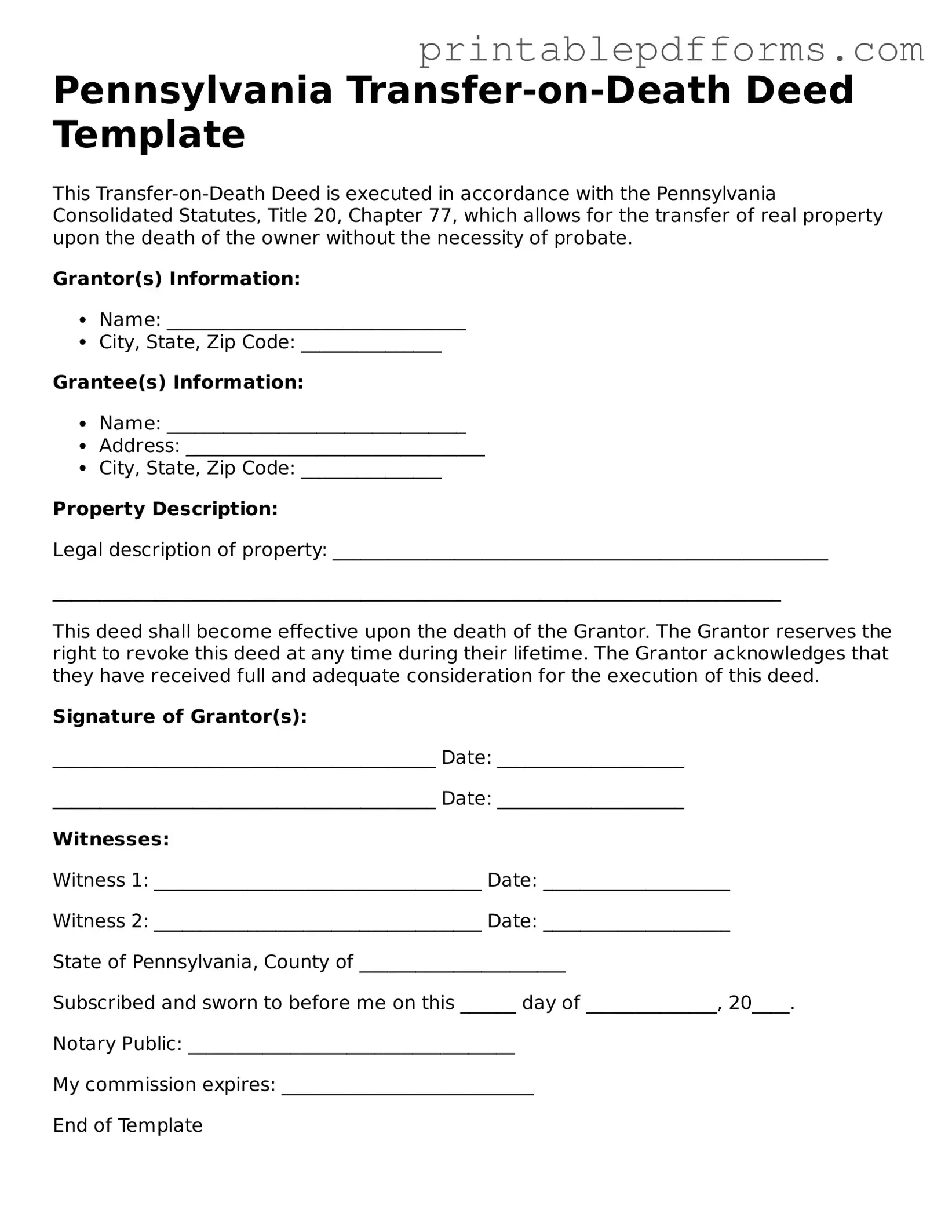Pennsylvania Transfer-on-Death Deed Template
This Transfer-on-Death Deed is executed in accordance with the Pennsylvania Consolidated Statutes, Title 20, Chapter 77, which allows for the transfer of real property upon the death of the owner without the necessity of probate.
Grantor(s) Information:
- Name: ________________________________
- City, State, Zip Code: _______________
Grantee(s) Information:
- Name: ________________________________
- Address: ________________________________
- City, State, Zip Code: _______________
Property Description:
Legal description of property: _____________________________________________________
______________________________________________________________________________
This deed shall become effective upon the death of the Grantor. The Grantor reserves the right to revoke this deed at any time during their lifetime. The Grantor acknowledges that they have received full and adequate consideration for the execution of this deed.
Signature of Grantor(s):
_________________________________________ Date: ____________________
_________________________________________ Date: ____________________
Witnesses:
Witness 1: ___________________________________ Date: ____________________
Witness 2: ___________________________________ Date: ____________________
State of Pennsylvania, County of ______________________
Subscribed and sworn to before me on this ______ day of ______________, 20____.
Notary Public: ___________________________________
My commission expires: ___________________________
End of Template
